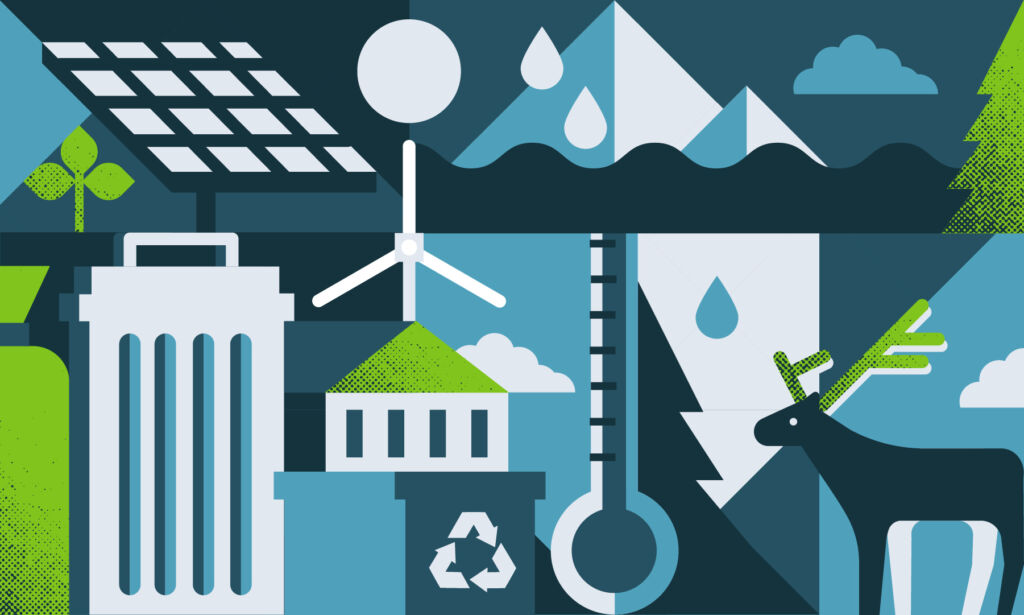There’s also a new kid on the policy block: Bill C-226, also known as the environmental racism bill. What would Canada look like if the right to a healthy environment was available to all, including communities that are disproportionately impacted by environmental degradation and climate change? And how could these two policy changes make that happen?
To find out, we sat down with some key activists in environmental justice and asked them what they think.
Bill S-5: Strengthening environmental protection for a healthier Canada
Environmental groups across the country are united in their advocacy for two main changes to CEPA: how toxic chemicals are assessed, and the right to a healthy environment.
Stronger assessments for toxic substances
Dr. Jane McArthur, toxic campaigns director at Canadian Association of Physicians for the Environment, is pushing for stronger measures for toxic substances.
“Bill S-5 five prioritizes prohibiting substances that pose the highest risk, but the terminology ‘highest risk’ is undefined,” explains McArthur. “Chemicals that are not the highest risk in the existing scientific evidence may still pose significant risks.”
In 2018, the federal government re-defined the term “vulnerable populations,” as it relates to federal chemical management. But the term is still contentious, and McArthur prefers the term “vulnerablized.”
She explains: “If we can look at vulnerable in that framework, then we understand that people are being made vulnerable as a result of systemic racism, sexism, gendered thinking or ableism. We’re making people vulnerable because of the laws that we have, or their failures.”
This concept is vital, given that toxic chemicals can accumulate in the body over time, and toxins may have stronger impacts when they interact with each other.
“Let’s say I have a job where I’m exposed to substances that are of concern,” McArthur continues. “I might also be exposed to those in the community where I live, and my mother might have been exposed to those when she was pregnant with me. These combinations of exposures make a person particularly vulnerable. But we’re not assessing those if we’re not looking at all those variables. Not everybody has equal access to the choice to not be exposed.”
Balancing the right to a healthy environment
On October 8, 2021, the United Nations Human Rights Council adopted Resolution 48/13 recognizing that a clean, healthy and sustainable environment is a human right. UN Special Rapporteur on Human Rights and the Environment, Canadian environmental lawyer Dr. David R. Boyd, celebrated by tweeting a shot of himself with a raised fist.
The irony? Canada is not one of the 150+ countries who recognize the right to a healthy environment. While environmental groups welcome this addition, they are also united in fighting the problem.
Dr. Elaine MacDonald, program director at Ecojustice Healthy Communities, points out that there are 14 troubling words that follow “the right to a healthy environment.” They are: “which may be balanced with relevant factors including social, economic, health and scientific factors,” states MacDonald. “We want everything from the word ‘which’ onwards to be struck from that clause. The courts can decide how to balance it against other issues and other aspects of CEPA. We don’t want the right to be undermined before it even becomes law.”
McArthur adds: “If you qualify that by arguing that economic factors can supersede it, it’s no longer a right to a healthy environment. It’s a right to economic activity.”
CEPA is largely about pollution prevention and toxic substance regulation. This addition, once properly worded, would bring a human rights lens to the legislation. It would “[shift] that lens so there’s recognition that somebody has the right to a healthy environment, the right to not have their air polluted, their drinking water polluted,” explains MacDonald. “Government decision-making under CEPA will require them to take that into consideration.”
Cassie Barker, senior program manager of toxics at Environmental Defence, points to the opportunity for citizen engagement around environmental justice issues.
“How this right is meaningful, how it is enforced, and how citizens can participate in decision-making—those are the key components of environmental rights,” notes Barker. “The hope is that we’re giving vulnerable groups legislative tools to tackle environmental injustice.”
Bill C-226: A national strategy to redress environmental racism
Centering racialized communities Bill C-226 mandates the Minister of the Environment to develop a national environmental racism strategy, including research on the link between race, socio-economic status and environmental risk, and to provide environmental hazard locations. Requiring consultation with community groups, the strategy may include policy changes, financial compensation (reparations) to impacted groups, and the collection of race-based data.
When compared to the strong advocacy focus on Bill S-5, Dr. Ingrid Waldron, executive director of ENRICH, finds that Bill C-226 is often considered an exotic sidebar. Her priority is the exact opposite: “Bill S-5 does not focus on racialized communities—it focuses on vulnerable communities,” explains Waldron. “That’s not enough, because of all vulnerable communities, racialized communities are the most impacted.”
Bill S-5 lumps racialized communities in with other vulnerable populations. Waldron acknowledges that children, women and the elderly are disproportionately impacted by environmental degradation and toxins.
“But I’m talking about the politics of it,” she says. “That’s what Bill C-226 does. It talks about the health impacts on racialized communities, and the fact that they are targeted by industry in a way that children, women and the elderly are not.”
Waldron also points to a key knowledge gap: “A lot of people in environmental science or justice haven’t had the benefit of critical race work. They don’t know how to articulate that through the issue of environmental justice.”
Waldron has seen plenty of health impacts to racialized and Indigenous women living close to toxic sites. These include higher rates of cancer, reproductive illness, respiratory illness and birth anomalies. Her research in Nova Scotia showed that Indigenous and Black communities were more likely to live in rural or isolated places.
“Government is more likely to put industry in places that are out of the way, because there’s an assumption that the people who live there will not fight back, or they don’t have the voice to be heard,” Waldron notes.
“Where people live, social class, level of education, skin colour, culture, gender—we have to look at these intersections.”
Situating environmental racism in a historical context
According to Waldron, it is vital to consider how the past has impacted the current state of environmental racism.
“It is born out of systemic inequities that have come out of colonialism. There’s a robustness to it, it’s baked into our systems,” Waldron notes. “Environmental racism manifests out of environmental policies. Ideologies about race and who isn’t valuable get written into these policies in ways that are not obvious.
Environmental policies continue to be written in the same way, and the cycle is never broken. White people always talk about neutrality. Everything seems very neutral, but it’s not.”
Giving impacted communities a voice
A key aspect of the bill is the requirement to consult with impacted communities.
“There are five principles of environmental racism, and one of them is that the people who are most impacted are not at the table making policy decisions,” notes Waldron. “We have to do this strategy right. Let’s hear what racialized people on the front lines have experienced.”
Everyone can agree on the need for disaggregated data.
“The government will have to collect statistical, race-based data that looks at the intersection of race, socioeconomic status, and toxic burden in the communities that are most impacted,” explains Waldron. “You can’t address an issue if you don’t know what’s going on.”
Mapping toxic sites is one way to provide evidence of the impacts of environmental racism. Waldron’s ENRICH Project produced an interactive map of environmental racism hotspots across Nova Scotia.
Now, the Canadian Coalition for Environmental and Climate Justice (CCECJ) is working on a Canada-wide environmental racism map. As Bill C-226 requires the involvement of community groups in environmental policymaking, the CCECJ could be a valuable partner in co-creating the strategy.
Waldron hopes that this bill will de-silo the environmental and health sectors.
“Environmental scientists work on pollution, but never truly make links with health,” Waldron explains. “It’s siloed off. This bill is going to legitimize the health impacts. It’s important to know the full gamut of the health
issues affecting communities.”
Do the bills go far enough?
Waldron acknowledges that Bill C-226 isn’t a magic wand that will suddenly clean up our environment and eliminate toxic impacts on racialized people.
She also knows that, because it is a Private Members’ Bill, it’s possible that it will pass but then no concrete action will be taken. She sees other benefits beside the legislation situating Canada as a global environmental racism leader:
“It holds the government’s feet to the fire. It makes them much more accountable and creates transparency. If they’re not doing what they said they would, the public can remind them of that when elections come around.”
Barker sees a real opportunity for race-based data to demonstrate the impact of environmental racism, thus holding industry to account.
“We hope for more prohibitive decisions that will prevent a lot more toxics and pollution. More data will hopefully inform better policy decisions. But Bills S-5 and C-226 together still aren’t enough, because we need more substantial legislative and budgetary tools to change course on toxics and climate.”
Both bills are expected to go to the House of Commons this coming fall. In the meantime, McArthur calls upon all Canadians to get in touch with their elected officials and tell them why passing this legislation is important.
“It doesn’t have to be from policy experts or physicians. Hearing from constituents that this is important to them, even via anecdotes and stories, really does make a difference. A quick note or phone call can help officials move things forward.”






